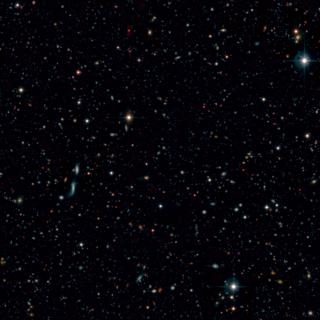Bibcode
de Diego, José A.; Nadolny, Jakub; Bongiovanni, Ángel; Cepa, Jordi; Pović, Mirjana; Pérez García, Ana María; Padilla Torres, Carmen P.; Lara-López, Maritza A.; Cerviño, Miguel; Pérez Martínez, Ricardo; Alfaro, Emilio J.; Castañeda, Héctor O.; Fernández-Lorenzo, Miriam; Gallego, Jesús; González, J. Jesús; González-Serrano, J. Ignacio; Pintos-Castro, Irene; Sánchez-Portal, Miguel; Cedrés, Bernabé; González-Otero, Mauro; Heath Jones, D.; Bland-Hawthorn, Joss
Bibliographical reference
Astronomy and Astrophysics
Advertised on:
6
2020
Journal
Citations
15
Refereed citations
13
Description
Context. The accurate classification of hundreds of thousands of galaxies observed in modern deep surveys is imperative if we want to understand the universe and its evolution.
Aims: Here, we report the use of machine learning techniques to classify early- and late-type galaxies in the OTELO and COSMOS databases using optical and infrared photometry and available shape parameters: either the Sérsic index or the concentration index.
Methods: We used three classification methods for the OTELO database: (1) u - r color separation, (2) linear discriminant analysis using u - r and a shape parameter classification, and (3) a deep neural network using the r magnitude, several colors, and a shape parameter. We analyzed the performance of each method by sample bootstrapping and tested the performance of our neural network architecture using COSMOS data.
Results: The accuracy achieved by the deep neural network is greater than that of the other classification methods, and it can also operate with missing data. Our neural network architecture is able to classify both OTELO and COSMOS datasets regardless of small differences in the photometric bands used in each catalog.
Conclusions: In this study we show that the use of deep neural networks is a robust method to mine the cataloged data.
Aims: Here, we report the use of machine learning techniques to classify early- and late-type galaxies in the OTELO and COSMOS databases using optical and infrared photometry and available shape parameters: either the Sérsic index or the concentration index.
Methods: We used three classification methods for the OTELO database: (1) u - r color separation, (2) linear discriminant analysis using u - r and a shape parameter classification, and (3) a deep neural network using the r magnitude, several colors, and a shape parameter. We analyzed the performance of each method by sample bootstrapping and tested the performance of our neural network architecture using COSMOS data.
Results: The accuracy achieved by the deep neural network is greater than that of the other classification methods, and it can also operate with missing data. Our neural network architecture is able to classify both OTELO and COSMOS datasets regardless of small differences in the photometric bands used in each catalog.
Conclusions: In this study we show that the use of deep neural networks is a robust method to mine the cataloged data.
Related projects

Evolution of Galaxies
Galaxy evolution is a crucial topic in modern extragalactic astrophysics, linking cosmology to the Local Universe. Their study requires collecting statistically significant samples of galaxies of different luminosities at different distances. It implies the ability to observe faint objects using different techniques, and at different wavelengths
Jorge
Cepa Nogue